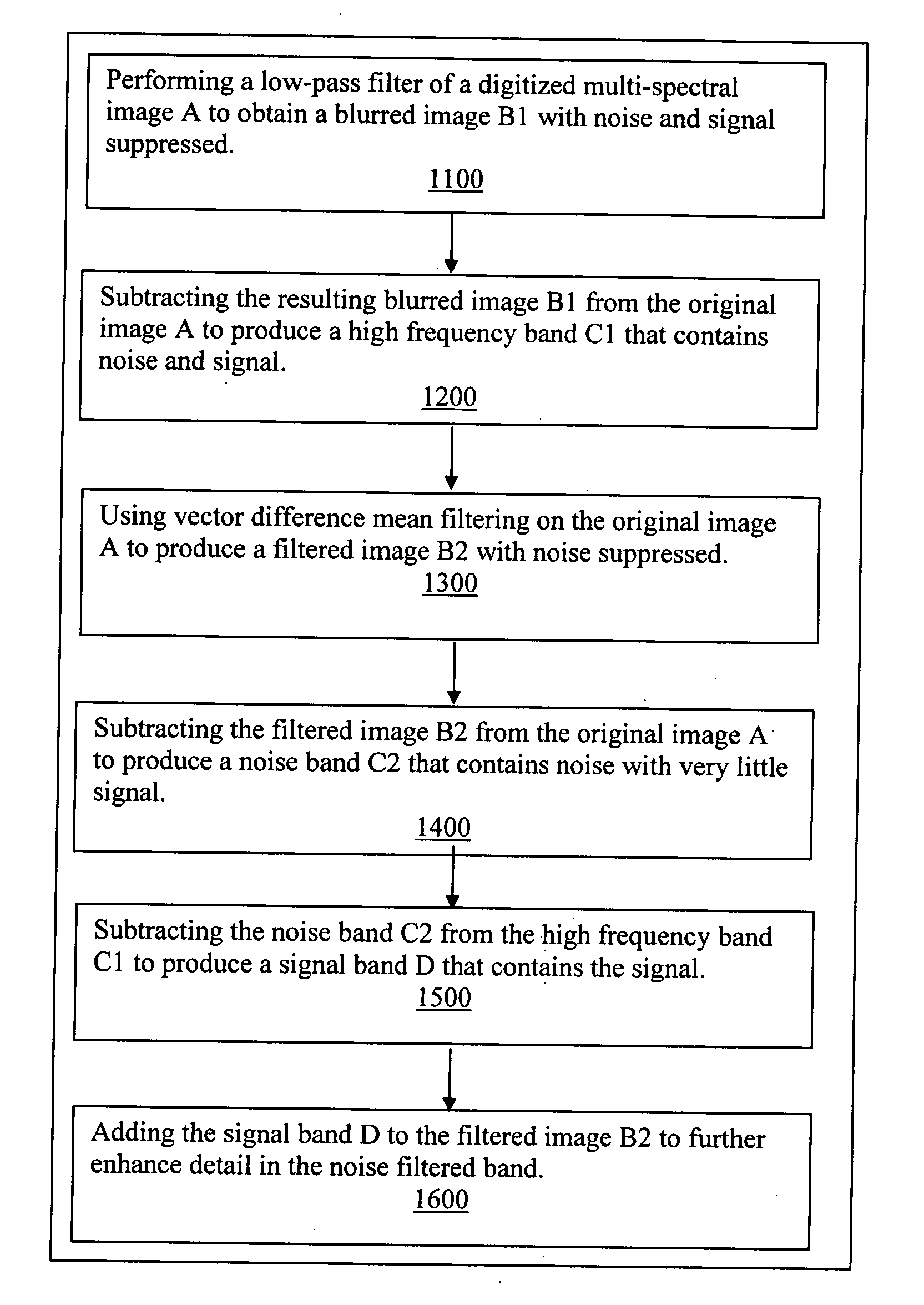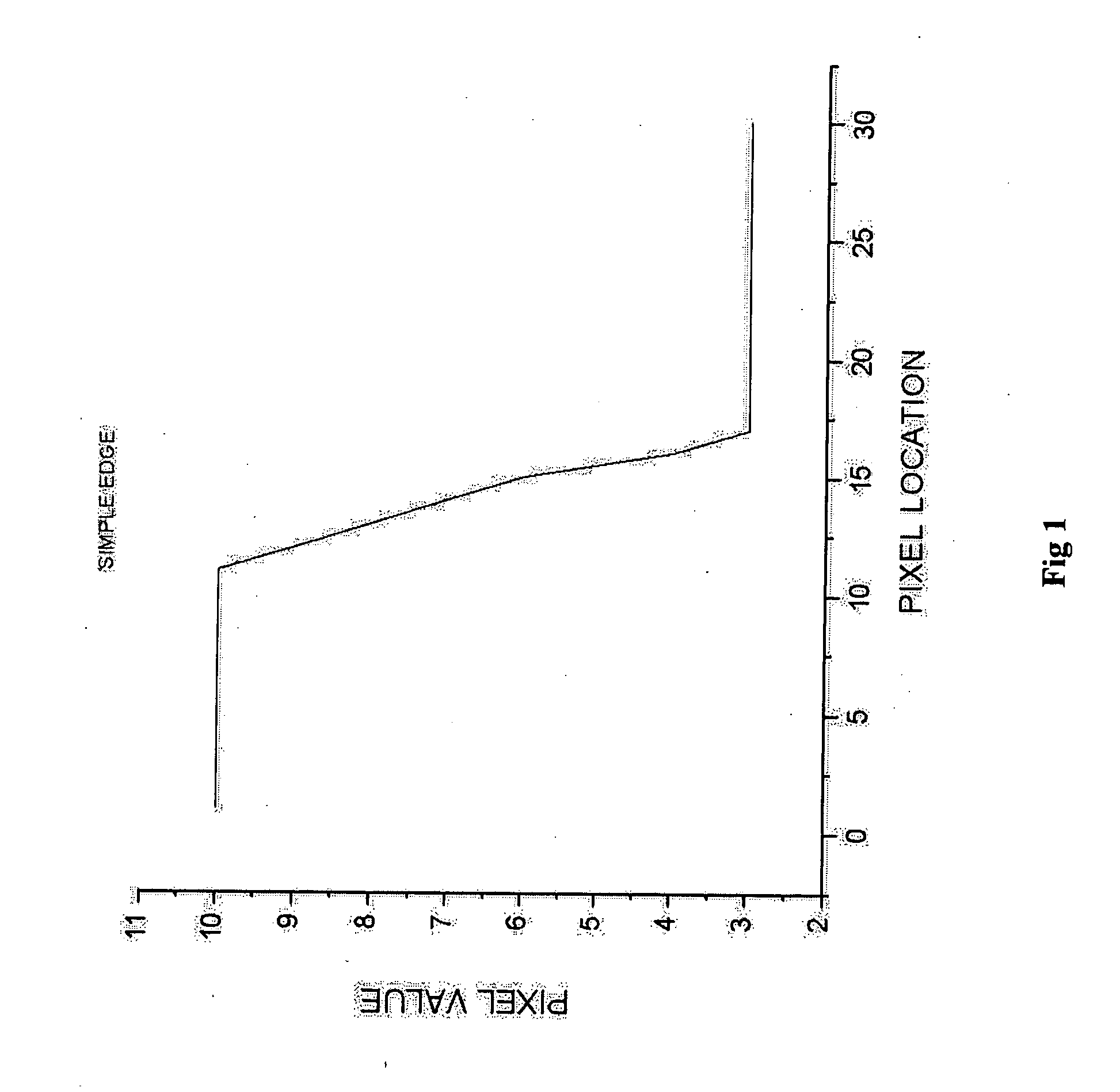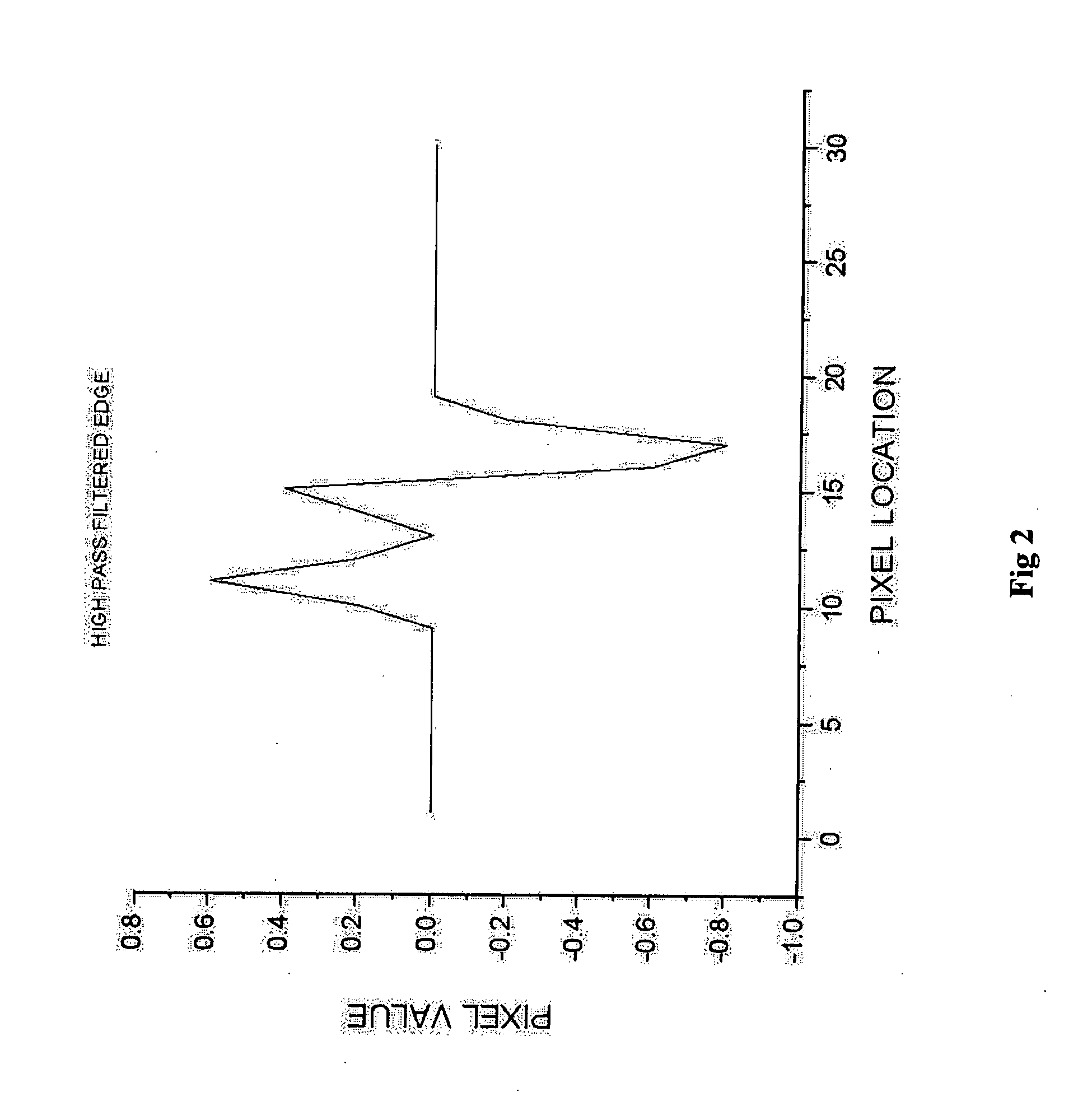System and method for sharpening vector-valued digital images
a digital image and vector-value technology, applied in the field of image data processing, can solve the problems of image quality, other undesirable artifacts, difficulty in further processing that image, etc., and achieve the effect of increasing noise, increasing noise, and increasing nois
- Summary
- Abstract
- Description
- Claims
- Application Information
AI Technical Summary
Benefits of technology
Problems solved by technology
Method used
Image
Examples
examples
[0067] The vector difference filtering may be performed as discussed in pending application number “System and Method for a vector difference mean filter for noise suppression,” Ser. No. 10 / 992,409, cited above.
[0068] In one example, the vector values comprise a red scalar color component, a green scalar color: component, and a blue scalar component for each of the plurality of pixels in the image. In another example, there are six vector values- an amplitude of a red scalar color component, a phase of a red scalar color component, an amplitude of a green scalar color component, a phase of a green scalar color component, an amplitude of a blue scalar color component, and a phase of a blue scalar color component. In another example, there are four vector values a cyan scalar color component, a magenta scalar color component, a yellow scalar color component, and a black scalar color component value for each of the plurality of pixels a black scalar color component value for each of t...
PUM
 Login to View More
Login to View More Abstract
Description
Claims
Application Information
 Login to View More
Login to View More - R&D
- Intellectual Property
- Life Sciences
- Materials
- Tech Scout
- Unparalleled Data Quality
- Higher Quality Content
- 60% Fewer Hallucinations
Browse by: Latest US Patents, China's latest patents, Technical Efficacy Thesaurus, Application Domain, Technology Topic, Popular Technical Reports.
© 2025 PatSnap. All rights reserved.Legal|Privacy policy|Modern Slavery Act Transparency Statement|Sitemap|About US| Contact US: help@patsnap.com



